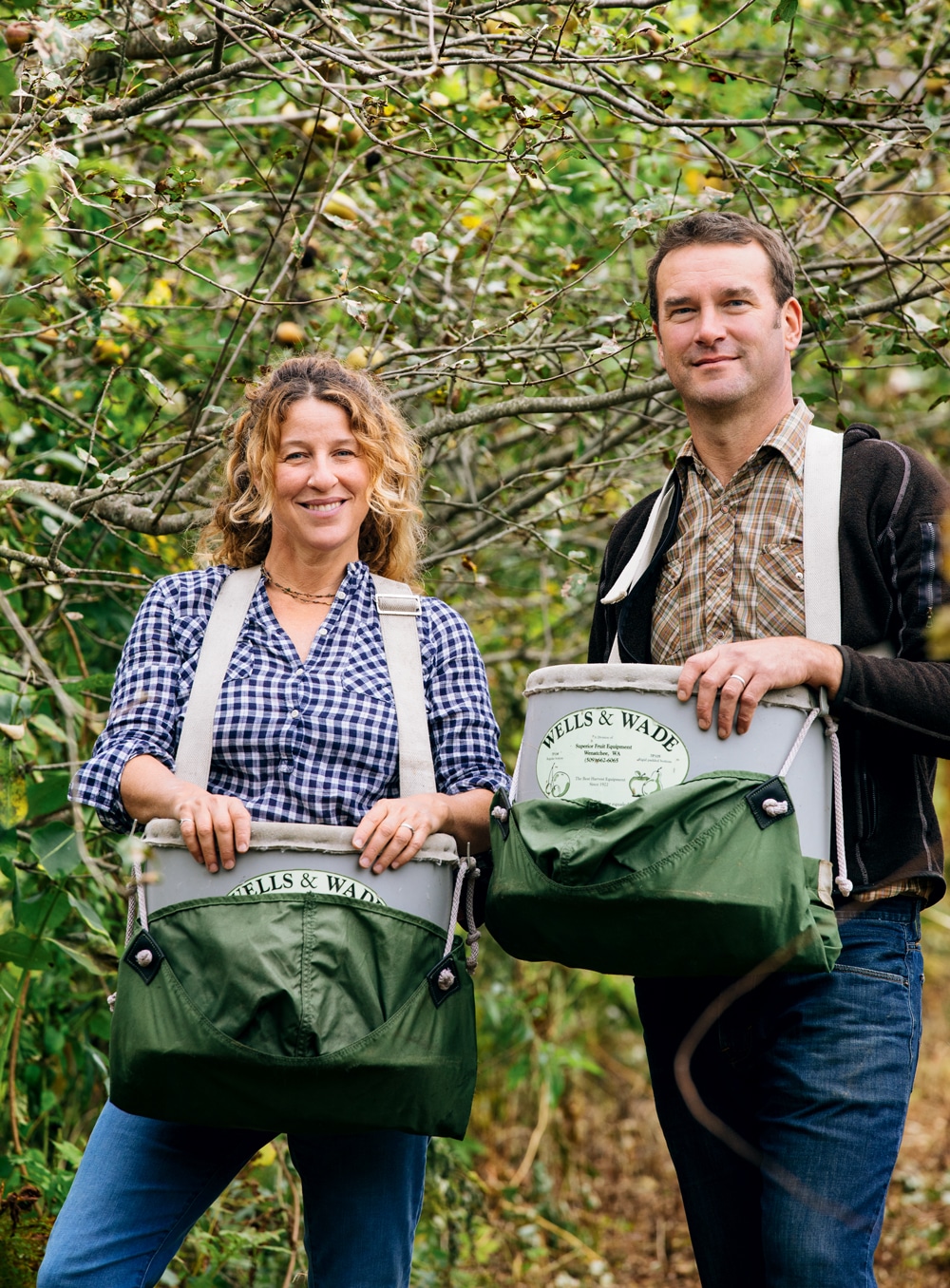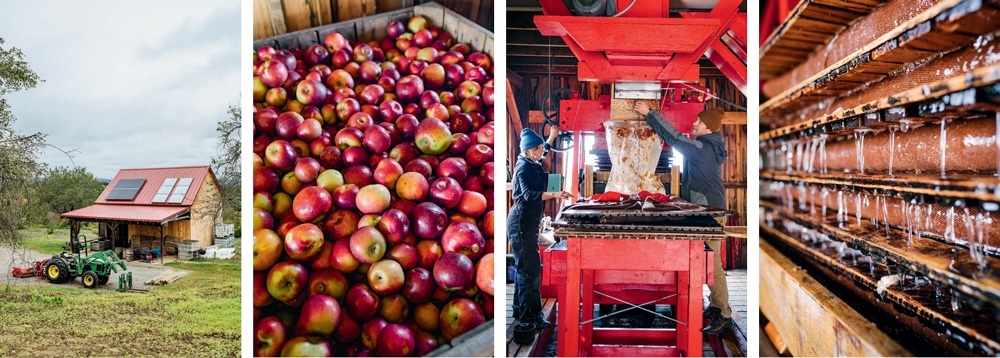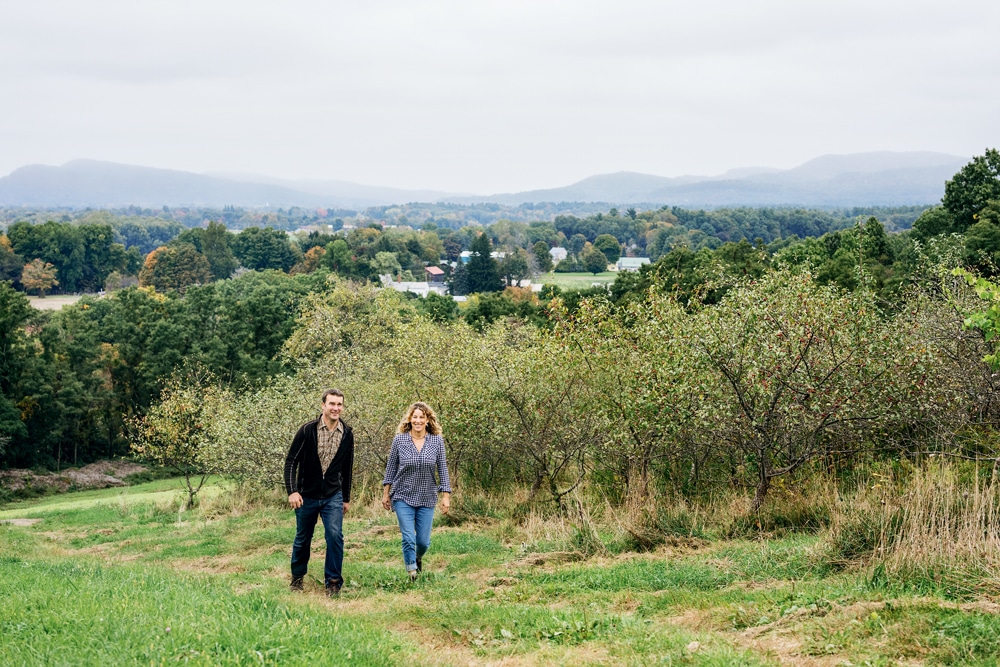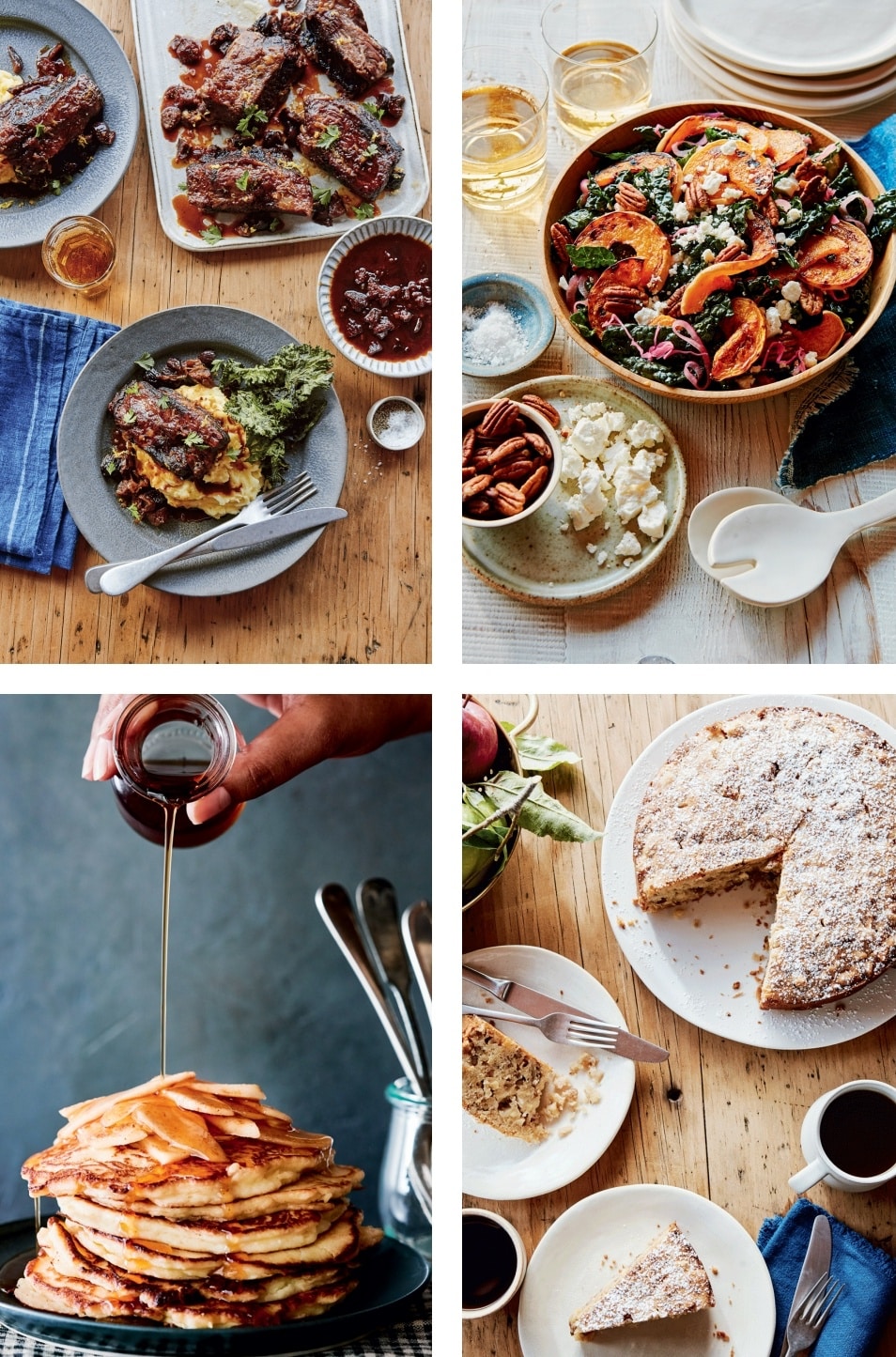Apples of Their Eye | Carr’s Ciderhouse in Hadley, Massachusetts
A family-run orchard in western Massachusetts is making hard cider that can turn any harvest meal into a party of new flavors.

Carr’s Ciderhouse owners Nicole Blum and Jonathan Carr.
Photo Credit : Adam DeTourThe barn at Carr’s Ciderhouse wasn’t built for show. When Jonathan Carr and Nicole Blum took the title to their farm in Hadley, Massachusetts, the chestnut-sided structure was a centenarian in decline, about as old as the gleaming red Mount Gilead cider press that it now houses.
Back when the barn and the press were built, around the turn of the 20th century, cider was already past its heyday as a fizzy, low-proof beverage more popular than beer. When Jonathan found the press for sale in a 2008 classified ad, most people thought of cider only as fresh juice sold in gallon jugs. So when the barn and the press were brought together, the former being rebuilt to accommodate the latter, it was an act of true optimism. Jonathan called it “a hopeful gamble.”
American cider was then in the early days of its current renaissance, dominated by a few syrupy-sweet brands that evoked wine coolers more than apple wine. But the couple stepped into the breach with a clear vision: to grow apples sustainably, to be good stewards of the land, and to make exceptional ciders.

Photo Credit : Adam DeTour
“When we bought the orchard, it was basically going into abandonment,” Jonathan says. “It was unnavigable in a tractor and, frankly, kind of scary, because some of the slopes are pretty severe.” The previous owner had planted the standard New England mix—Cortland, Red Delicious, McIntosh—but most of the trees were weakened by neglect and age.
So the couple began clearing land at the top of the hill, with its sweeping views of the Connecticut River Valley, and planted 1,500 trees in varieties they thought they could grow without pesticides: Golden Russet, Goldrush, and traditional cider apples such as Yarlington Mill and Dabinett.
“The goal was always cider,” Jonathan says. “The table-fruit market is tough, and we wanted to manage the orchard ecologically. Cider was a great way to not have to worry about the appearance of the fruit.” Plus, having already operated a small market farm together, “we didn’t just want to grow and sell the raw materials,” Nicole says. “We wanted to make something.”
Fast-forward to a crisp day this past November, and the once-humble barn is strung with lights to welcome visitors making their way up the farm’s long, rutted drive, dodging puddles from the previous night’s rain. The sky is deep blue and nearly cloudless, and Carr’s is hosting a cider tasting as part of Franklin County Cider Days, an annual festival that brings thousands to this rural corner of western Massachusetts.
For Jonathan and Nicole, this day comes smack-dab in the middle of a harvest season that ran late, and bins of apples still need pressing. But the old press is quiet today, as Jonathan talks visitors through the process of turning fresh fruit into the fermented finished product that they’ll be sampling in a moment: how wooden bins, each containing about 600 pounds of fruit, are tipped onto a sorting table and their contents are ferried up a narrow escalator to the third story of the barn, where a grinder breaks them down into the pulp from which their juices can freely flow. Above Jonathan’s head hang the oak and elm pressing racks, burnished with years of apple tannins. “At the end of the day we’re all covered in apple splatter,” he says. “Then we hose the whole thing down and start over.”

Photo Credit : Adam DeTour
What he’s describing is standard cider-making procedure, whether for fresh juice or the hard stuff. But he lights up most when he talks about what they do once all that juice is gravity-fed into stainless steel fermentation tanks. And that is … as little as possible.
“We don’t add commercial yeast,” he explains. “All fruit has many species of wild yeast that are naturally present on its skin. We found that if you ferment these wild yeasts at cool temperatures, you get good results. And that’s how they would’ve done it in the old days.”
That means letting the juice sit in this uninsulated barn for months at a time, the initial fermentation held in frozen suspense until the warm spring weather can restart the process. It’s a technique that the couple first observed in the cider-making regions of Ireland—where Jonathan was born and where he and Nicole first tried their hand at farming—and in Normandy and England’s West Country. And it’s the key to producing the well-structured ciders that eschew sweetness but bring forth aromas such as orange, fennel, and rose petals.
“When people who’ve only had mass-produced cider ask what ‘wild fermented’ means, I’ll often use the analogy of sourdough bread,” Nicole says. “You have Wonder Bread, which is soft and squishy, but then you have bread from an artisan baker where there’s so much flavor and structure because they’ve added the element of time.”
Lately, they’ve also been working with their friend Matt Kaminsky, an apple expert, to bring wild apples from the surrounding fields and forests into the mix. “We’re grafting them out in the orchard to see how well they perform in that environment,” Jonathan says. “The idea is to produce a ‘native’ apple cider, rather than just using European varieties.”
And they keep tinkering. Some of the juice they press now gets boiled down, like maple sap, into cider syrup, a rich, caramel apple–flavored sweetener with a long New England history (the product won a Yankee Editors’ Choice Food Award in 2015). And after a trip to Canada during which they met a balsamic vinegar producer using apples rather than grapes, a line of vinegars was born. “We want to figure out ways to preserve everything that we love to do with apples,” Nicole says.

Photo Credit : Adam DeTour
They’ve also been cooking with apples in every form, and that wisdom was recently funneled into Ciderhouse Cookbook: 127 Recipes That Celebrate the Sweet, Tart, Tangy Flavors of Apple Cider, which they cowrote with Nicole’s sister, chef and food writer Andrea Blum.
“There’s a lot of pressure in the business world to specialize and build your brand around one particular thing,” Jonathan says. “And certainly we felt that when we first started out with our cider. But we realize we want to be generalists.”
Just this year, they’ve added chestnut and Japanese walnut trees, persimmons, papaws, and elderflowers to their test garden. And they want to do more tastings at the barn. “All these new plantings are being done with the idea of keeping our community fed,” Nicole says. Like any farmer, she takes the long view, knowing it’ll be years before the new trees bear fruit and reveal whether they’re suited to their particular microclimate. “We want to be resilient,” she says. “The climate is changing. Hedging our bets, diversification is going to be our friend. And we’ll keep thinking about all the different things we can ferment or process in some way to preserve them.”
—
The following recipes are all adapted from Ciderhouse Cookbook, used with permission from Storey Publishing:

Photo Credit : Colin Price
Apple Recipes from Carr’s Ciderhouse
Cider-Braised Beef Short Ribs
Kale Salad with Butternut Squash, Toasted Pecans, and Feta
Apple Pommeau Cake
Ricotta Pancakes with Lemon, Apples, and Cider Syrup
See More
Behind the Scenes at Carr’s Ciderhouse | Video
Amy Traverso
Amy Traverso is the senior food editor at Yankee magazine and co-host of the public television series Weekends with Yankee, a coproduction with WGBH. Previously, she was food editor at Boston magazine and an associate food editor at Sunset magazine. Her work has also been published in The Boston Globe, Saveur, and Travel & Leisure, and she has appeared on Hallmark Home & Family, The Martha Stewart Show, Throwdown with Bobby Flay, and Gordon Ramsay’s Kitchen Nightmares. Amy is the author of The Apple Lover’s Cookbook, which was a finalist for the Julia Child Award for best first-time author and won an IACP Cookbook Award in the “American” category.
More by Amy Traverso

